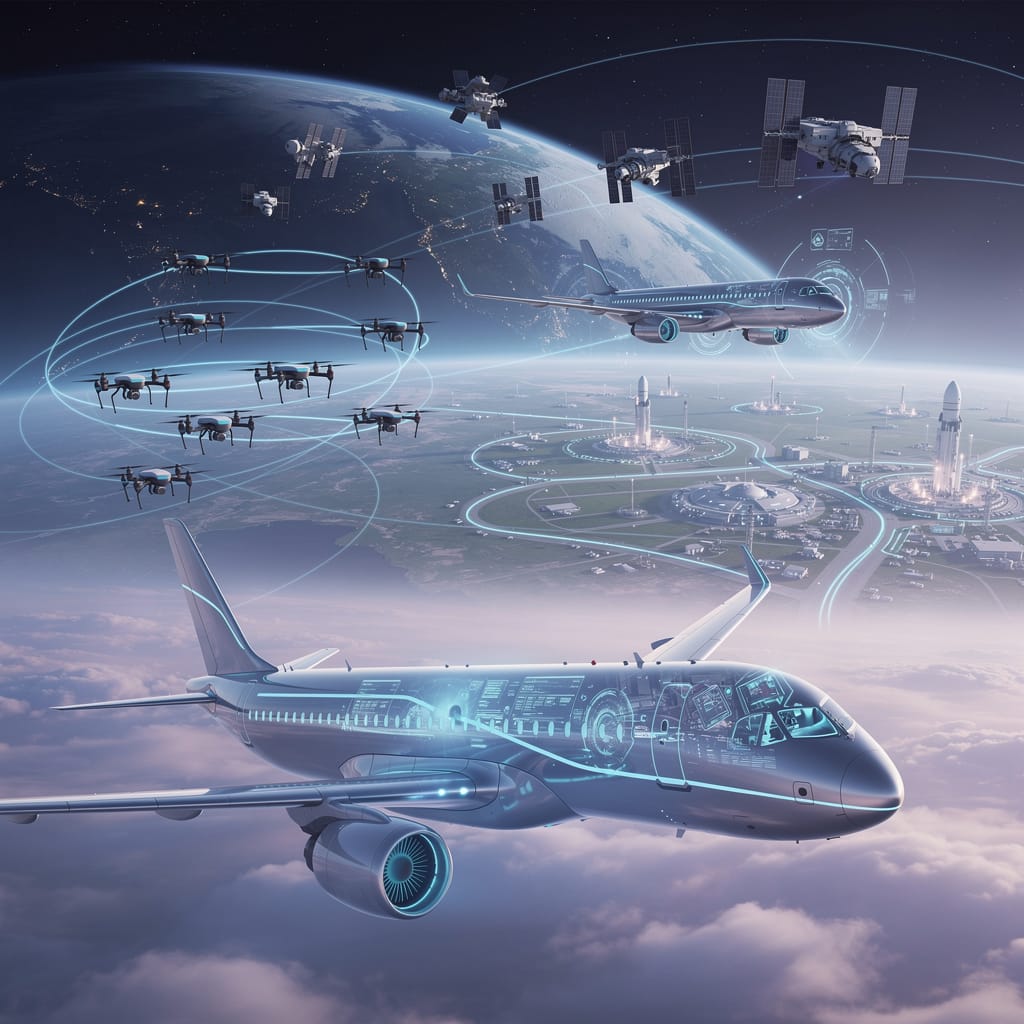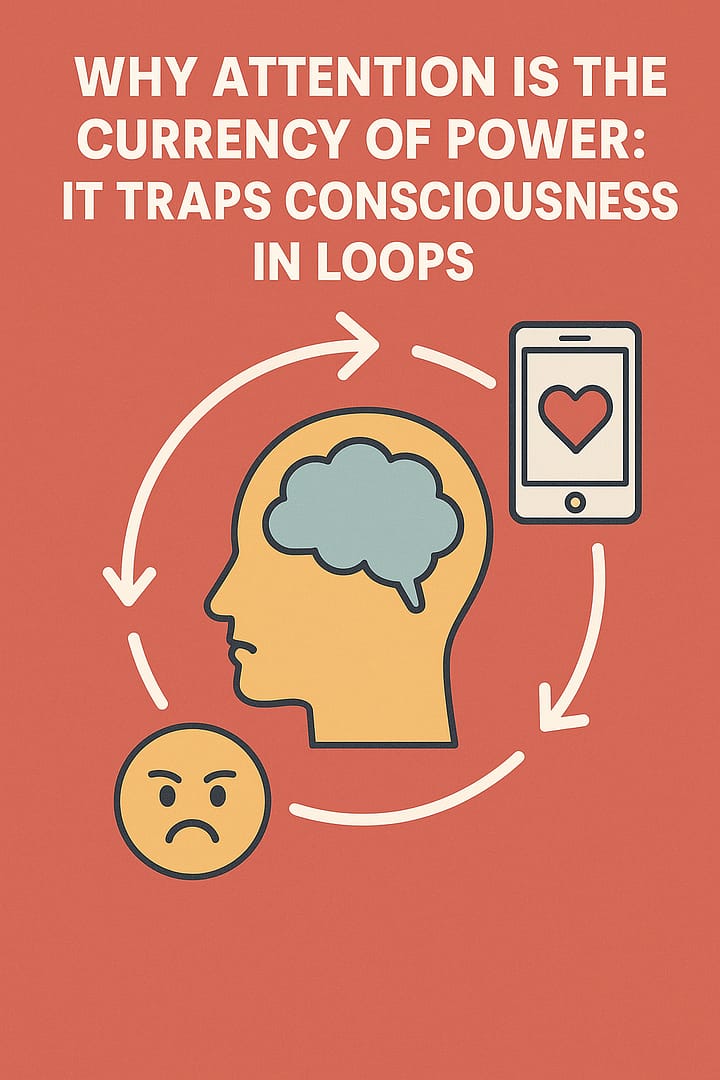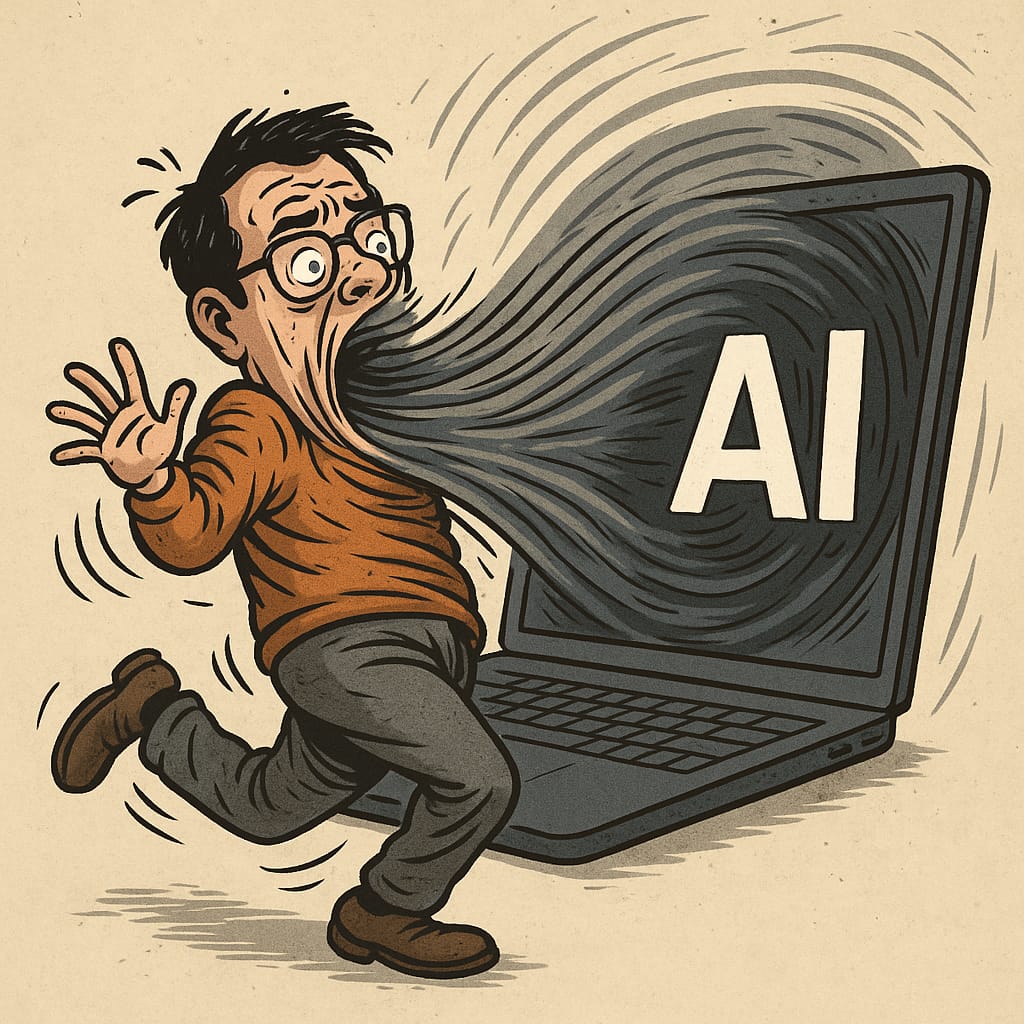The Future of AI in Everyday Life
The Future of AI in Everyday Life with a Robotic Revolution
Let’s explore the exciting possibilities of AI-powered robots becoming integral parts of our daily lives in the future!
Smart Homes with AI Integration
In the future, AI-powered robots could seamlessly integrate into our homes, making them smarter and more intuitive. These robots might control various aspects of our living environment, adjusting lighting, temperature, and security systems based on our preferences.
Personalized AI Companions
Imagine having AI companions tailored to individual personalities. These companions could engage in conversations, offer emotional support, and assist with daily tasks. They might remember our preferences, recommend activities, and adapt to our moods.
Healthcare and Well-being Partners
AI-driven robots could serve as health companions, reminding us to take medication, encouraging exercise, and even monitoring vital signs. They might alert medical professionals if they detect health issues, contributing to proactive healthcare management.
Education and Lifelong Learning
AI companions could assist in personalized education, helping children and adults alike to learn new skills, languages, and subjects. They might provide interactive lessons, practice sessions, and real-time feedback.
Enhanced Productivity and Assistance
AI-powered robots could be our personal assistants, managing schedules, setting reminders, and coordinating tasks. They might facilitate efficient work routines and help us stay organized.
Exploration and Adventure
In the future, robots with AI capabilities might accompany us on adventures, aiding in outdoor activities, exploration, and travel planning. These robots could offer navigation, safety guidance, and insights about unfamiliar places.
Assistance for the Elderly and Disabled
AI-driven robots could provide essential assistance to the elderly and individuals with disabilities, helping with mobility, daily tasks, and companionship. These robots might play a crucial role in enabling independent living.
Environmental Monitoring and Sustainability
Robots equipped with sensors and AI algorithms could monitor environmental conditions and contribute to sustainability efforts. They might identify pollution levels, water quality, and help with conservation initiatives.
Entertainment and Creativity
Future AI companions could be creative partners, collaborating on art, music, and storytelling. They might generate ideas, offer feedback, and enhance our imaginative endeavors.
Social Interaction and Connectivity
AI companions could bridge geographical distances by facilitating virtual gatherings and conversations. They might enable us to connect with loved ones, even if they are far away.
Ethical Considerations and Privacy
As AI-powered robots become deeply integrated into our lives, we must address ethical considerations surrounding privacy, data security, and dependency. Striking the right balance between technology and human autonomy will be crucial.
The future holds a realm of possibilities where AI-powered robots seamlessly blend into our daily routines, enhancing our well-being, productivity, and overall quality of life. While the path to this future involves technical advancements and ethical considerations, the potential for AI to become trusted companions and partners in our journey is undeniably exciting.

Assistance for the Elderly and Disabled enabling Independence and Quality of Life
Let’s see how AI-driven robots can provide essential assistance to the elderly and individuals with disabilities.
Personalized Care and Support
AI-powered robots can be designed to cater to the specific needs of the elderly and disabled. They can offer assistance with daily tasks such as dressing, grooming, medication reminders, and meal preparation. This personalized care contributes to improved quality of life and increased independence.
Mobility Assistance
For individuals with mobility challenges, AI-driven robots can act as mobility aids. These robots can provide support for walking, help with transferring from one place to another, and even assist with getting in and out of vehicles.
Fall Detection and Emergency Response
AI sensors and cameras can be integrated into robots to detect falls or emergency situations. Upon detection, the robot can alert caregivers or medical professionals, ensuring prompt assistance.
Companionship and Emotional Support
Loneliness is a significant concern for the elderly and disabled. AI companions can provide companionship, engage in conversations, and offer emotional support. These companions help combat feelings of isolation and improve mental well-being.
Medication Management
AI-driven robots can dispense medications at the right times, ensuring that individuals follow their prescribed medication regimens. This feature is especially valuable for those with chronic conditions that require strict medication schedules.
Remote Monitoring and Communication
For individuals living alone, AI-powered robots can remotely monitor their well-being. These robots can track vital signs, movement patterns, and even engage in video calls with caregivers or medical professionals.
Physical Therapy and Rehabilitation
AI-driven robots can assist individuals with physical therapy exercises and rehabilitation routines. These robots guide users through exercises, track progress, and provide feedback to ensure proper technique.
Household Chores and Maintenance
Elderly and disabled individuals might find household chores challenging. AI robots can help with tasks like cleaning, laundry, and organizing, ensuring a comfortable and tidy living environment.
Access to Information and Entertainment
AI companions can provide access to information, news, and entertainment. Voice-controlled robots can read books aloud, play music, and offer news updates, enriching the daily lives of those with limited mobility.
Enhancing Safety and Security
AI-driven robots can monitor the home environment for potential hazards such as gas leaks or unlocked doors. They can alert users and caregivers about any safety concerns, promoting a secure living space.
Reducing Caregiver Burden
AI-driven robots alleviate some of the burdens placed on caregivers. By providing assistance with daily tasks and remote monitoring, robots allow caregivers to focus on emotional support and more complex caregiving responsibilities.
AI-driven robots have the potential to make a profound impact on the lives of the elderly and individuals with disabilities. By providing practical assistance, emotional support, and promoting independence, these robots contribute to enhancing the overall quality of life and well-being of those who need it most. As technology advances and the capabilities of AI-driven robots grow, their role in supporting vulnerable populations will continue to expand.

Assistance for Babies and Young Children
Nurturing Early Years with AI
AI-driven robots have the potential to play a significant role in supporting the care and development of babies and young children
Early Developmental Support
AI-powered robots can engage in interactive play and learning activities that promote early childhood development. These robots can help stimulate sensory exploration, cognitive skills, and language development.
Educational Companions
AI companions tailored for young children can provide age-appropriate educational content, storytelling, and interactive games. These companions foster curiosity, creativity, and a love for learning from a young age.
Sleep Monitoring and Assistance
For parents with infants, AI robots can help monitor sleep patterns, provide soothing sounds, and even simulate gentle rocking motions to help babies sleep soundly.
Nutrition and Feeding Assistance
AI-powered robots can assist parents in tracking feeding schedules and offering guidance on nutrition for babies and toddlers. They can remind parents about feeding times and introduce appropriate solid foods.
Health Monitoring and Safety
AI-driven robots can monitor a child’s health metrics, such as temperature and heart rate, alerting parents if any concerns arise. They can also ensure that the child’s environment is safe and free from potential hazards.
Language Development and Communication
AI companions can engage in simple conversations with young children, helping them develop language skills and vocabulary. These robots can answer questions, tell stories, and encourage verbal interaction.
Virtual Playmates and Social Skills
AI-powered robots can engage in pretend play and social interactions with children, fostering the development of social skills, empathy, and emotional intelligence.
Homework and Learning Support
For older children, AI companions can assist with homework, answer questions, and provide explanations for various subjects. This support enhances learning and academic achievement.
Entertainment and Creativity
AI robots can offer creative activities such as drawing, crafting, and imaginative play, inspiring children’s creativity and allowing them to express themselves.
Emotional Well-being
AI companions can help children manage emotions and cope with challenges. They can provide comfort and support during times of stress, anxiety, or uncertainty.
Parental Assistance and Peace of Mind
AI robots can assist parents by offering advice on child care, developmental milestones, and health-related concerns. They provide an extra layer of support and guidance.
Privacy and Ethical Considerations
When designing AI companions for children, privacy and ethical considerations are paramount. These robots must prioritize the safety and well-being of children, including data security and age-appropriate content.
AI-driven robots have the potential to revolutionize child care and early childhood development by providing personalized support, educational engagement, and companionship. As technology advances and AI becomes more sophisticated, the possibilities for enhancing the well-being and growth of babies and young children continue to expand.

Examples of existing devices and robots that cater to the needs of babies and young children
There are already AI-powered devices, companions, and robots that cater to the needs of babies and young children.
Here are a few examples:
AI-Powered Toys and Companions
Companies have developed interactive toys and companions that engage with children through conversations, games, and educational activities. These devices often use natural language processing to interact with kids in a fun and educational way.
Sleep and Soothing Devices
There are AI-driven devices designed to help babies and young children sleep better. These devices may play soothing sounds, provide gentle vibrations, and simulate rocking motions to help infants and toddlers fall asleep.
Educational Tablets and Apps
Educational tablets and apps with AI-driven content offer age-appropriate learning experiences for children. These platforms provide interactive lessons, games, and activities that promote cognitive development and learning.
Baby Monitors with AI Features
Modern baby monitors often come equipped with AI features that monitor a baby’s movements, sounds, and sleep patterns. Some devices can analyze data to provide insights on sleep quality and patterns.
AI-Enhanced Storytelling
Certain devices can tell interactive stories to children. These stories adapt based on a child’s responses, creating a personalized and engaging storytelling experience.
Language Learning Tools
AI-driven devices can help children learn languages by offering vocabulary lessons, pronunciation exercises, and interactive language games.
Robot Companions
Some companies have developed robot companions specifically designed for children. These robots can play games, tell stories, provide educational content, and even assist with basic tasks.
Educational Robots for STEM Learning
Robots designed for children’s STEM education offer hands-on learning experiences in science, technology, engineering, and mathematics. These robots help children develop problem-solving skills and a passion for STEM subjects.
While these technologies exist, it’s important to note that their effectiveness, safety, and appropriateness for children vary. When considering such devices, it’s essential to research and choose products that are age-appropriate, privacy-conscious, and aligned with your values as a parent or caregiver.

Shop Corner
Future of AI in robots On Amazon
Thank you for questions, shares and comments!
Share your thoughts or questions in the comments below!
Source OpenAI’s GPT language models, Fleeky, MIB, & Picsart






